20+ SAMPLE Rent Notice
-
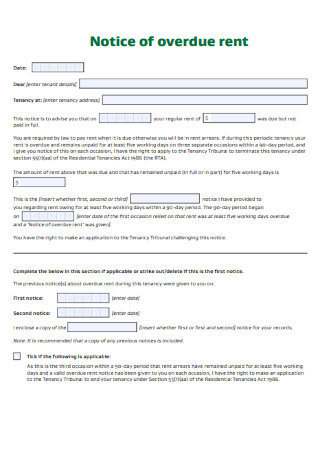
Notice of Overdue Rent
download now -
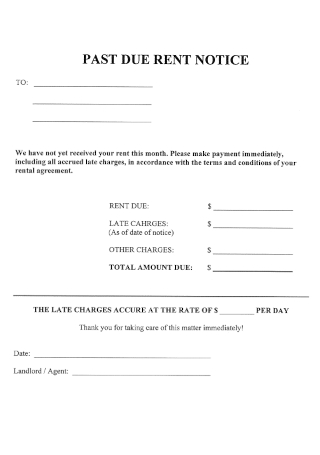
Past Due Rent Notices
download now -
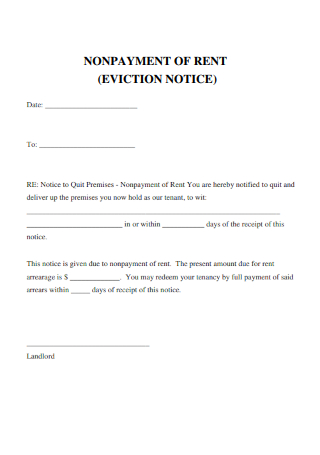
Nonpayment of Rent Eviction Notice
download now -
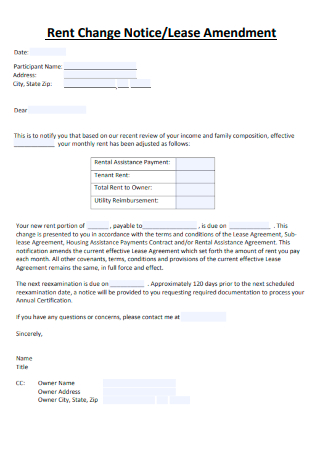
Rent Change Notice Lease Amendment
download now -

Notice to Tenant of Rent Default
download now -

Notice of Inability to Pay Rent Due to Covid 19
download now -
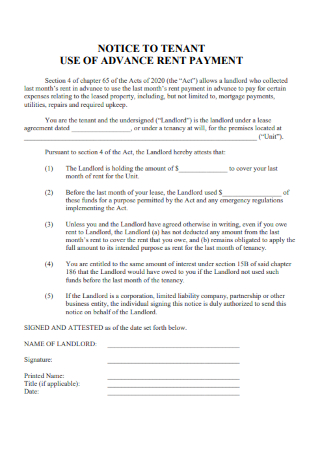
Notice to Tenant Use of Advance Rent Payment
download now -
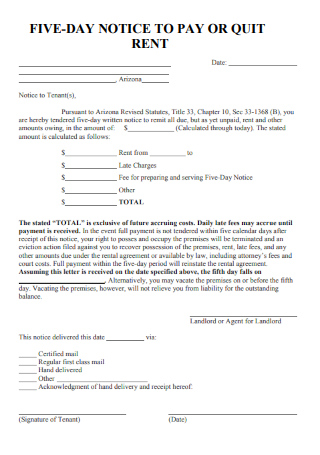
5 Day Notice to Pay or Quit Rent
download now -

Notice to Tenant of Rent Increase
download now -
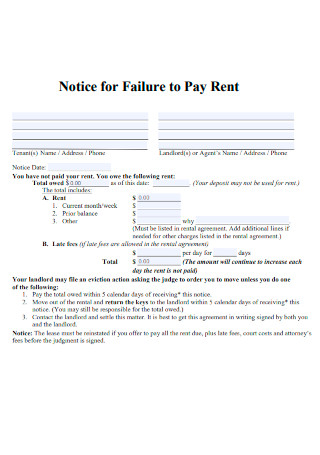
Notice for Failure to Pay Rent
download now -
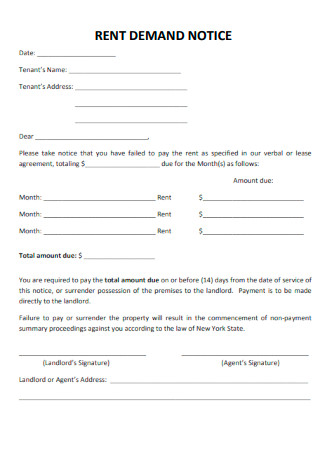
Rent Demand Notice
download now -
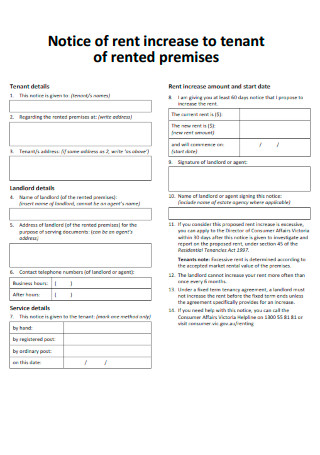
Notice of Rent Increase to Tenants of Rented Premises
download now -
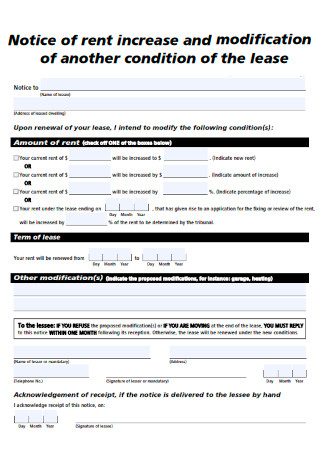
Notice of Rent Increase and Modification of Another Condition of the Lease
download now -
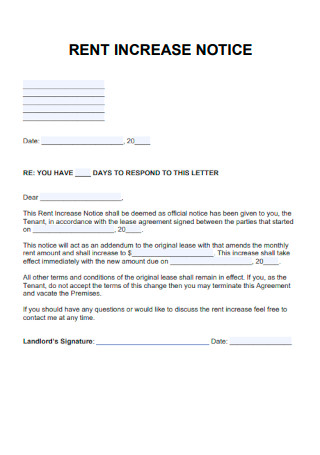
Rent Increase Notice
download now -
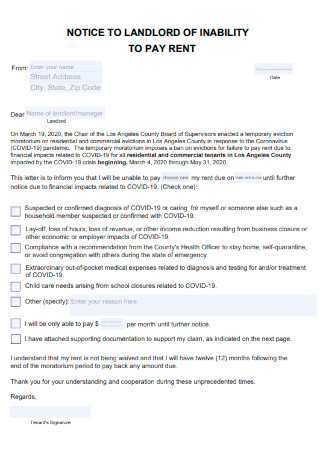
Notice to Landlord of Inability to Pay Rent
download now -
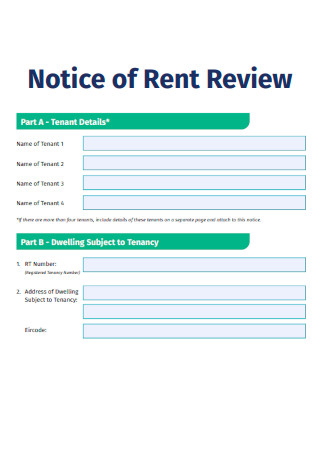
Notice of Rent Review
download now -
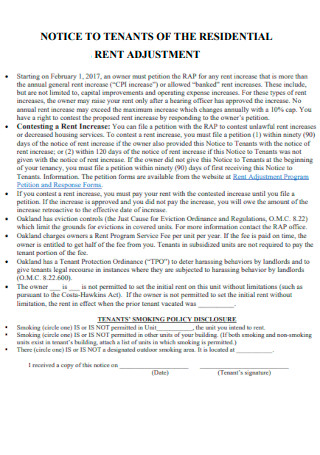
Notice to Tenants of the Residential Rent Adjustment
download now -
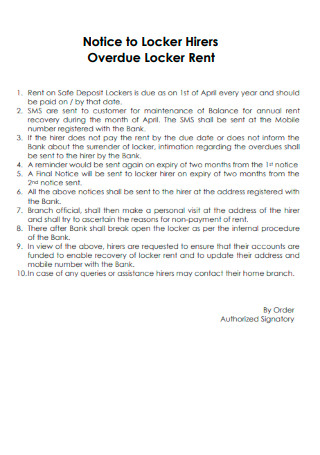
Notice to Locker Hirers Overdue Locker Rent
download now -
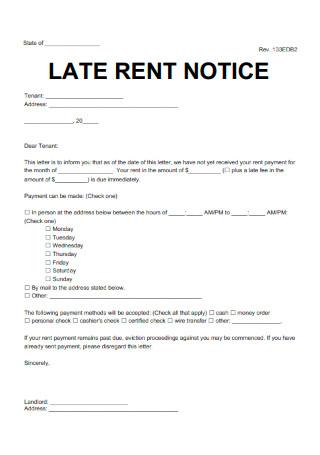
Late Rent Notice
download now -
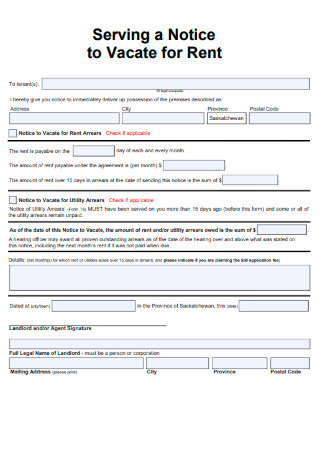
Serving a Notice to Vacate for Rent
download now -
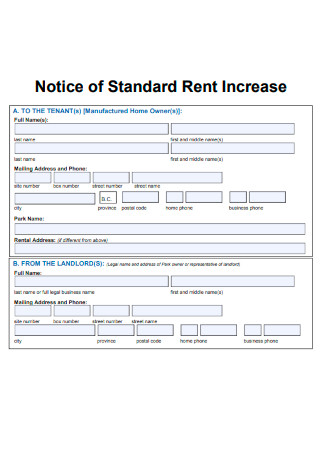
Notice of Standard Rent Increase
download now
FREE Rent Notice s to Download
20+ SAMPLE Rent Notice
What Is a Rent Notice?
Components of a Rent Notice
When To Use a Rent Notice for Tenants
How To Serve the Late Rent Notice and What Happens After
FAQs
Why is there a need to use a late rent notice?
When is the best time to serve a late rent notice to tenants?
What is the best way to deliver a rent notice?
What Is a Rent Notice?
A rent notice is a document that is prevalent in the real estate industry. A rent notice is also referred to in different ways, including late rent notice, notice to pay rent, failure to pay rent notice, demand for past due rent, notice to cure, demand notice for nonpayment of rent, notice to demand payment for failure to pay rent, demand for payment of rent, and notice to pay rent. The rent notice is a document that a property owner or a landlord writes to a tenant that informs them that their rent is past their due date. The rent notice requests payment from the tenant as soon as possible. While a tenant must take the document seriously, the rent notice is less formal than an eviction notice. It serves as a warning notice and courteous reminder that the rent is past due and that they can still pay their dues. If a tenant has only been late to pay rent for the first time, landlords can send it with the intention of being a reminder. However, when a tenant repeatedly misses their rent dues on multiple instances, the landlord or the property owner has the authority to write a rent notice, quit notice, eviction notice, or terminate the lease agreement. The late rent notice must include the rent amount and the late fees applicable.
According to data sourced from Statista regarding the number of renter-occupied homes in the United States from 1975 to 2021, an approximate 44 million housing units are under the occupancy of renters during 2021. The occupancy rate increases each year starting from 2010 up to 2021 from the information present on the bar graph.
Components of a Rent Notice
There is no standardized format for writing a rent notice to tenants. However, there are classic formats that landlords, property managers, and property owners use when writing a late rent notice. For the party that sends the rent notice, make sure that the tenant has enough time to respond to the notice and that they have options and opportunities to communicate the contents of the notice. For a tenant receiving the letter, make sure that the components are complete. The section below details the different components of a rent notice that must be present at all times to provide valuable information. It also provides additional details for a better understanding of each element.
When To Use a Rent Notice for Tenants
A landlord or property manager has different ways to let a tenant know that they are late on their payments. As such, there are different options that they can use that result in them having a difficult time selecting which ones to give. Remember that when delivering a past due rent notice, secure a record of the date and process of giving the document. The section below provides helpful tips that a landlord or a property manager can use to determine which of the options they can use to address late rent payments.
How To Serve the Late Rent Notice and What Happens After
There are different ways for landlords or property managers to serve the late rent notice to tenants. Remember that when serving any notice to your tenants, check the local and state laws before beginning the process. Some details of the notice affect the implementation process of the rent notice, and it is necessary to adjust accordingly. The section below provides a helpful guide to help the landlord or property manager to implement or serve the late rent notice to a tenant.
-
1. Serve Notices When Rent is Already Due
The first thing to determine is when due dates for payment occur. Check the lease agreement or rental agreement that the two parties established at the beginning of the tenancy. Make sure that the tenant is aware of when rent is due to lessen the cases of misunderstandings. Rent is due on the specified date of the rent payment. The payment is late if it is on the day after the due date. This is the time when the landlord or a property manager writes up a late rent notice. However, if payment is still incomplete after three days, the pay or quit notice is the next document to send.
-
2. Serving the Notice
All residents or tenants with rent amounts still due receive a three-day notice to pay or quit notice the next. The notice to pay or quit notice forms must contain the complete and legal names of each adult for a home rental with necessary and accurate information. If the tenants do properly fill out the forms, local courts will have to restart the entire process which can cost about three months of rent. The landlord or property manager must personally hand the form to persons aged 18 and up, living in the rental unit or home. Anyone can receive the form so long as they are not under the age of 18. As an alternative, the landlord can send the notice through certified mail so they can have proof of the tenant receiving a copy of the notice. As the person sending the notice, make sure that you have an original copy of the document in case there is a need to file it at a later date as court documents.
-
3. Do Not Accept Partial Payments from Tenants
Landlords and property owners must remember that they are responsible for following a specific process. It also means that they can only accept rent payments in full after serving the three-day pay or quit notice period to tenants. If they commit the mistake of taking the partial payments for the rental property, the whole process will have to start once more.
-
4. Begin the Eviction Process
On the sixth day of the month, the landlord must gather all related documents and prepare to file the eviction notice to the tenant in question in a local court system. The necessary documents that the landlord needs include the original copy of the three-day notice to pay rent or quit, the original declaration of service, a copy of the tenant application completed after moving in, a signed copy of the lease or rental agreement, documents about the rent price increase through a rent raise and change of terms, and a copy of the rental agreement after these changes.
-
5. Continue to Refuse Accepting Any Partial Payment from the Tenant
In this stage of the process, the landlord must not take any partial payments from the tenant at any cost. However, if the tenant pays the dues and all the additional fees and costs, then the landlord can accept the payment. If they accept any form of partial payment, the entire process starts once again. As a result, it leads to major losses and a slowdown in operations for the business.
FAQs
Why is there a need to use a late rent notice?
A simple letter from a landlord that reminds a tenant of missing their rent payments may just be what they need to receive payment for their job. There are instances when a tenant just forgets to file their check for payment or come to the landlord and settle payment for the rental property. The notice is the quickest and most convenient way to remind the tenants, and maintain positive relationships for the duration of the lease or rental agreement.
When is the best time to serve a late rent notice to tenants?
Tenants receive late rent notices from landlords as soon as the rent payment is past the due date and out of the grace period. It allows the tenant to settle their dues and cure the breach of contract.
What is the best way to deliver a rent notice?
The best way to deliver a rent notice is through a written format, and these notices are made through in-person deliveries, through a courier service, or certified or registered mail.
Writing a late rent notice must not feel like a demand from the landlord. Instead, it should serve as a reminder for them to pay their dues on time. Serving the late rent notice must only be done after a tenant misses their due date. It is also advisable to extend a grace period for them to pay their dues to establish a positive relationship before sending them other notices. Construct a rent notice for tenants who miss payments by downloading the 20+ Sample Rent Notice in PDF from Sample.net.
